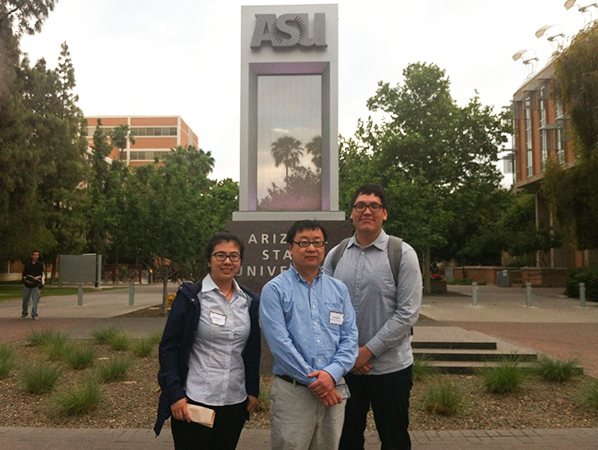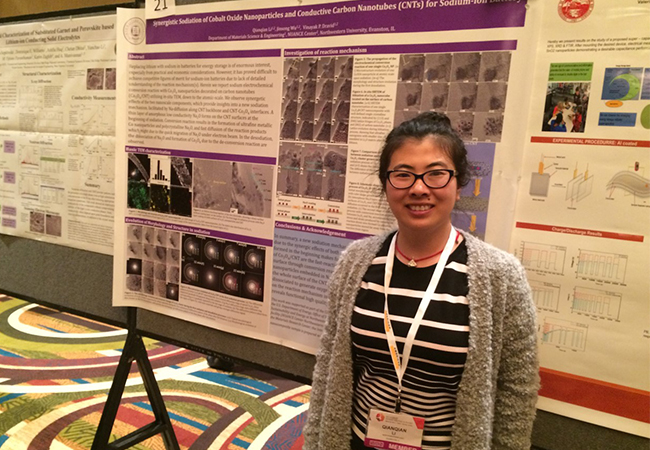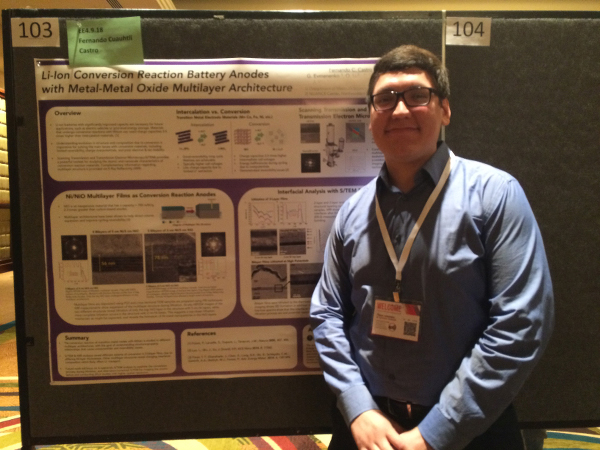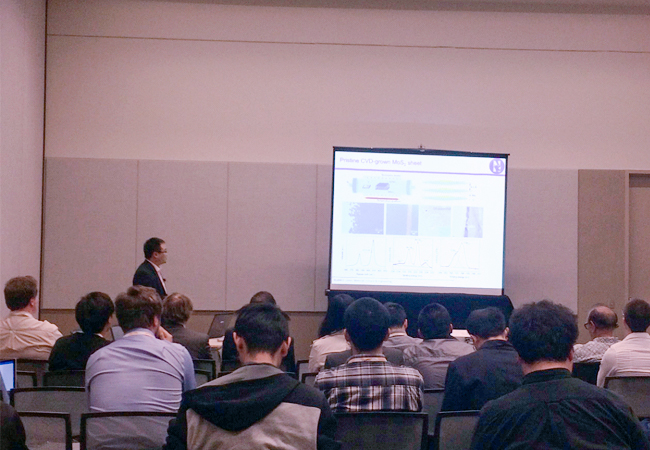2016 Materials Research Society (MRS) Spring Meeting
Dr. Yuan Li, Dr. Jinsong Wu, Dr. Qianqian Li and graduate student Fernando Castro attended the 2016 Materials Research Society (MRS) spring meeting in Phoenix, AZ, from March 28 to April 1.


Dr. Jinsong Wu, Dr. Qianqian Li and graduate student Fernando Castro attended the 2016 MRS spring conference and the “Challenges and Opportunities for Aberration-corrected Electron Microscopy” workshop at Arizona State University in Tempe, Arizona.



The following is a brief summarization of Dr. Yuan Li's talk.
Atomically thin two-dimensional (2-D) structures, such as layered transition metal dichalcogendies (TMDCs) and black phosphorus (BP), are being explored as potential candidates for future nanoelectronic devices due to their unique physical/chemical properties and intrinsic band gap. However, thermal transport in various 2-D materials beyond graphene have not been well-studied and their concrete thermal conductivity was not experimentally valued. In this presentation, we report a series of our research focused on developing a reliable temperature-dependent Raman spectroscopy for understanding the unique thermal conduction performance MoS2 nanoribbons. The nanoribbons of MoS2 were fabricated using a mask-controlled photolithography technique. Considering their anisotropic in-plane thermal conduction property, a Raman spectroscopy equipped with polarized laser were used to determine their thermal conductivity. Our studies provide fundamental understanding on the unique thermal conduction of 2-D structures and are possible to give inspiration for the real fabrication of their nanoscale electronic devices where thermal management is critical.
